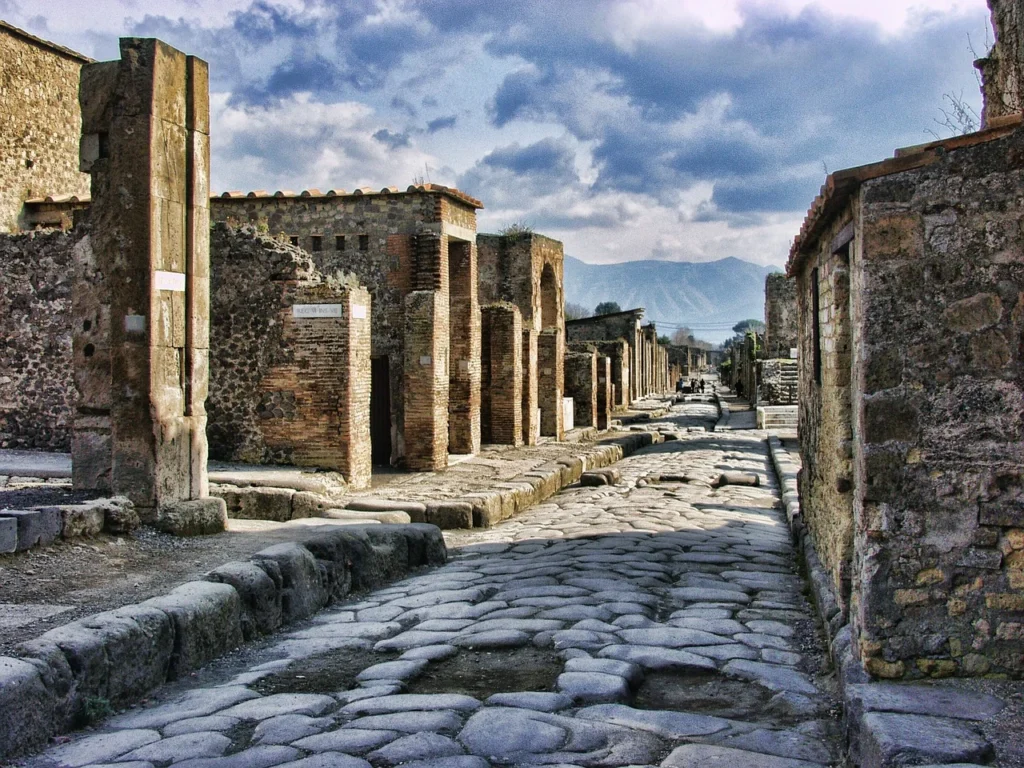Italy has increasingly cracked down on tourist behavior that causes damage to cultural sites or breaks rules at historic landmarks. One case involving a British tourist drew particular attention.
He carved his and his daughters’ initials into the wall inside Pompeii, leading to a citation for damaging cultural heritage and a fine likely in the tens of thousands of euros.
His action serves as a serious warning about how quickly respectful visiting can turn into expensive consequences .
Italian lawmakers recently raised maximum fines for defacing cultural heritage to €40,000 and are pressing to extend penalties up to €60,000 for severe offenses, with possible prison sentences reaching seven years.

A Closer Look at the Pompeii Incident
The tourist, reportedly a 37-year-old British man, etched initials including his daughters’ on the wall of the House of the Vestal Virgins, a UNESCO World Heritage site.
He claimed it was to “mark” the visit, but authorities charged him for damaging archaeological artifacts. His case illustrates how even “small” acts carry major financial and legal risks.
From Foot-Dipping to Monument Vandalism: Fines Range Widely
Italy applies strict rules to preserve historical monuments. Even minor behaviors can result in fines. For example:
- A 42-year-old British tourist was fined €500 for dipping his feet into Rome’s Barcaccia Fountain near the Spanish Steps. He also received a temporary ban from returning to that area.
- Other visitors who entered or splashed in fountains like the Trevi or Piazza Navona have faced fines ranging from €300 to €450, and in rare cases temporary bans.
The variability in fines reflects how local rules and cultural sensitivity play a big role in enforcement.
Monument Vandalism: Fines That Shock
Tourists who damage Italy’s historic sites face the most serious penalties. Among high-profile cases:
- A visitor fined in the past €20,000 for carving a single initial into the Colosseum.
- A Swiss teenager under investigation for engraving a letter into the Colosseum could face fines up to €15,000 or jail time.
- In Herculaneum, a Dutch man was fined €40,000 for graffiti tagging on ancient Roman walls.
- Florence saw a German tourist damage the Neptune Fountain by attempting to climb it and breaking marble elements. He faces cleanup costs of €5,000 and further fines.
Why Italy Is Enforcing Heavier Penalties
Italy is stepping up enforcement for several reasons:
- Tourism has created pressure on fragile historic structures and artworks.
- Damage from selfies, graffiti, sitting on monuments, or bathing in fountains is rising.
- Authorities aim to deter repeat offenders and protect cultural heritage from careless behavior.
- New laws passed in 2023 increased maximum fines and extended legal protections to cultural property across the country.
What Triggers Fines and Bans
Here are the main behaviors likely to lead to penalties:
- Touching or entering fountains such as the Barcaccia or Trevi (fines typically €300–€500).
- Climbing on or carving monuments, especially with tools or sharp objects.
- Graffiti or vandalism, including inscriptions on walls or statues.
- Prohibited actions like eating near heritage sites, wearing swimwear in town centers, or walking barefoot (as in places like Portofino or Cinque Terre where €50–€433 fines apply).
Penalties Explained
| Behavior | Fine Range | Additional Penalties |
| Fountain dipping (e.g. Barcaccia) | €300 – €500 | Temporary ban from site or area |
| Bathing in fountains (Trevi or Navona) | €300 – €450 | Possible ban, especially for persistent cases |
| Monument vandalism or graffiti | €5,000 – €60,000+ | Civil charges and restoration cost requirements |
| Tourist mischief at historical sites | €100 – €400 | Local fines (e.g. sitting on steps or eating) |
What Travelers Need to Know
- Respect signage: Many sites have signs prohibiting touching, sitting, or entering water features.
- Document clearance: Never touch or carve historical objects, even at ancient ruins.
- Dress appropriately in towns with public restrictions (e.g. Portofino’s rules on swimwear and picnics).
- Validate tickets and avoid defacing public transport property—some fines apply for invalid tickets but higher for intentional damage.
- Know that some cities impose temporary travel bans from popular landmarks if you break rules.
Why the Rumor of a £12,000 Fine May Mislead
- No verified news reports have shown a British tourist fined exactly £12,000.
- Actual fines range from a few hundred euros to as high as €60,000, depending on severity.
- Minor offences like fountain dipping carry lower penalties, while engraving or defacing UNESCO sites leads to major fines and legal consequences.
Real Examples of Tourist Penalties
- British tourist fined €500 for dipping feet in Barcaccia Fountain.
- Group fined €450 each after skinny dipping in Trevi Fountain and banned from the area.
- Tourist fined €5,000 in Florence for climbing and damaging Neptune Fountain.
- Visitor fined €20,000 for carving initial on the Colosseum.
How to Avoid Trouble
When visiting Italy:
- Do not touch or enter fountains or pools in public squares.
- Keep at least arm’s length from monuments and sculptures.
- Follow local rules on proper dress and behavior around heritage areas.
- Be especially careful of selfie positions—some poses near cliffs or monuments have ended badly.
Final Word
A fine of £12,000 for a British tourist in Italy has no verified basis. But real consequences for damaging or disrespecting cultural sites are very real and sometimes extreme.
From €500 fines for fountain dipping to six-figure penalties for vandalism, travelers must understand that carelessness can lead to serious financial or legal fallout.
Italy’s recent policy shifts reflect the nation’s resolve to protect its invaluable heritage.
















